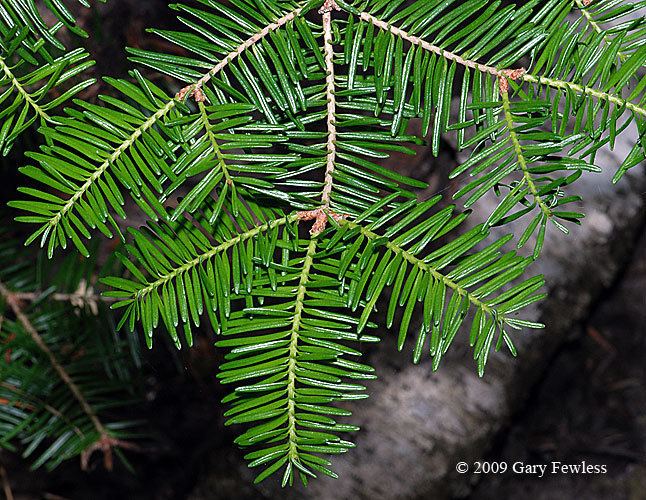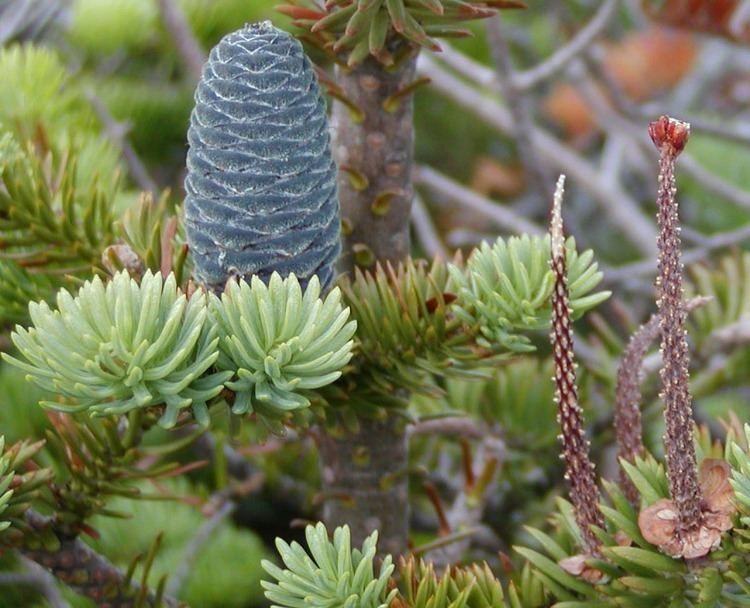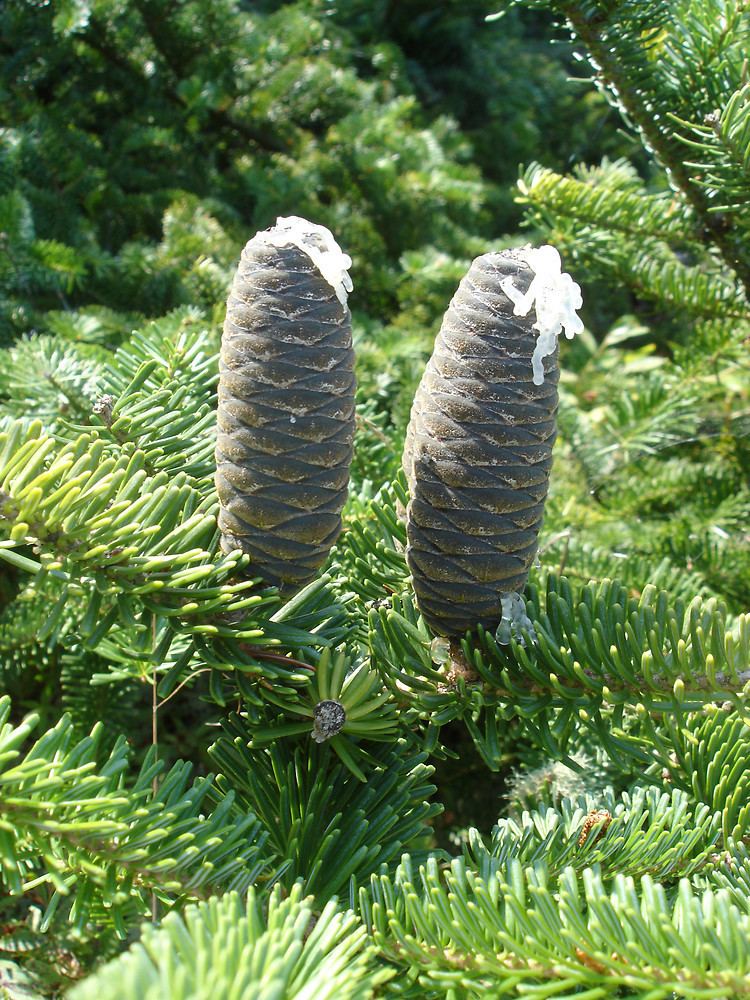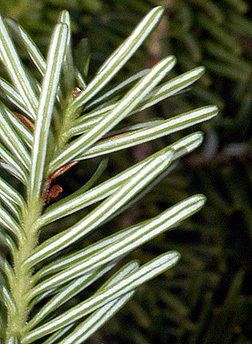Genus Abies Higher classification Fir | Division Pinophyta Scientific name Abies balsamea Rank Species | |
 | ||
Similar Fir, Spruce, Fraser fir, Pine, White spruce | ||
Abies balsamea abies fraseri
Abies balsamea or balsam fir is a North American fir, native to most of eastern and central Canada (Newfoundland west to central British Columbia) and the northeastern United States (Minnesota east to Maine, and south in the Appalachian Mountains to West Virginia).
Contents
- Abies balsamea abies fraseri
- Abies balsamea fungi kingdom
- Description
- Varieties
- Ecology
- Uses
- Tree emblem
- References

Abies balsamea fungi kingdom
Description

Balsam fir is a small to medium-size evergreen tree typically 14–20 metres (46–66 ft) tall, rarely to 27 metres (89 ft) tall, with a narrow conic crown. The bark on young trees is smooth, grey, and with resin blisters (which tend to spray when ruptured), becoming rough and fissured or scaly on old trees. The leaves are flat and needle-like, 15 to 30 mm (5⁄8 to 1 1⁄8 in) long, dark green above often with a small patch of stomata near the tip, and two white stomatal bands below, and a slightly notched tip. They are arranged spirally on the shoot, but with the leaf bases twisted so that the leaves appear to be in two more-or-less horizontal rows on either side of the shoot. The seed cones are erect, 40 to 80 mm (1 1⁄2 to 3 1⁄4 in) long, dark purple, ripening brown and disintegrating to release the winged seeds in September.
Varieties
There are two varieties:

Ecology

On mountain tops, stands of balsam fir occasionally develop fir waves. Often found in association with black spruce, white spruce and trembling aspen.

This tree provides food for moose, American red squirrels, crossbills and chickadees, as well as shelter for moose, snowshoe hares, white-tailed deer, ruffed grouse and other small mammals and songbirds. The needles are eaten by some lepidopteran caterpillars, for example the Io moth (Automeris io).
Uses

Both varieties of the species are very popular as Christmas trees, particularly in the northeastern United States. The resin is used to produce Canada balsam, and was traditionally used as a cold remedy and as a glue for glasses, optical instrument components, and for preparing permanent mounts of microscope specimens. Given its use as a traditional remedy and the relatively high ascorbic acid content of its needles, historian Jacques Mathieu has argued that the balsam fir was the "aneda" that cured scurvy during the second expedition into Canada of Jacques Cartier. The wood is milled for framing lumber (part of SPF lumber), siding and pulped for paper manufacture. Balsam fir oil is an EPA approved nontoxic rodent repellent. The balsam fir is also used as an air freshener and as incense.
Prior to the availability of foam rubber and air mattresses, balsam fir boughs were a preferred mattress in places where trees greatly outnumbered campers. Many fir limbs are vertically bowed from alternating periods of downward deformation from snow loading and new growth reaching upward for sunlight. Layers of inverted freshly cut limbs from small trees created a pleasantly fragrant mattress lifting bedding off the wet ground; and the bowed green limbs were springs beneath the soft needles. Upper layers of limbs were placed with the cut ends of the limbs touching the earth to avoid uncomfortably sharp spots and sap.
The cultivar A. balsamea 'Hudsonia group' (Hudson fir), has gained the Royal Horticultural Society's Award of Garden Merit.
The Native Americans used it for a variety of medicinal purposes.
Tree emblem
Balsam fir is the provincial tree of New Brunswick.
